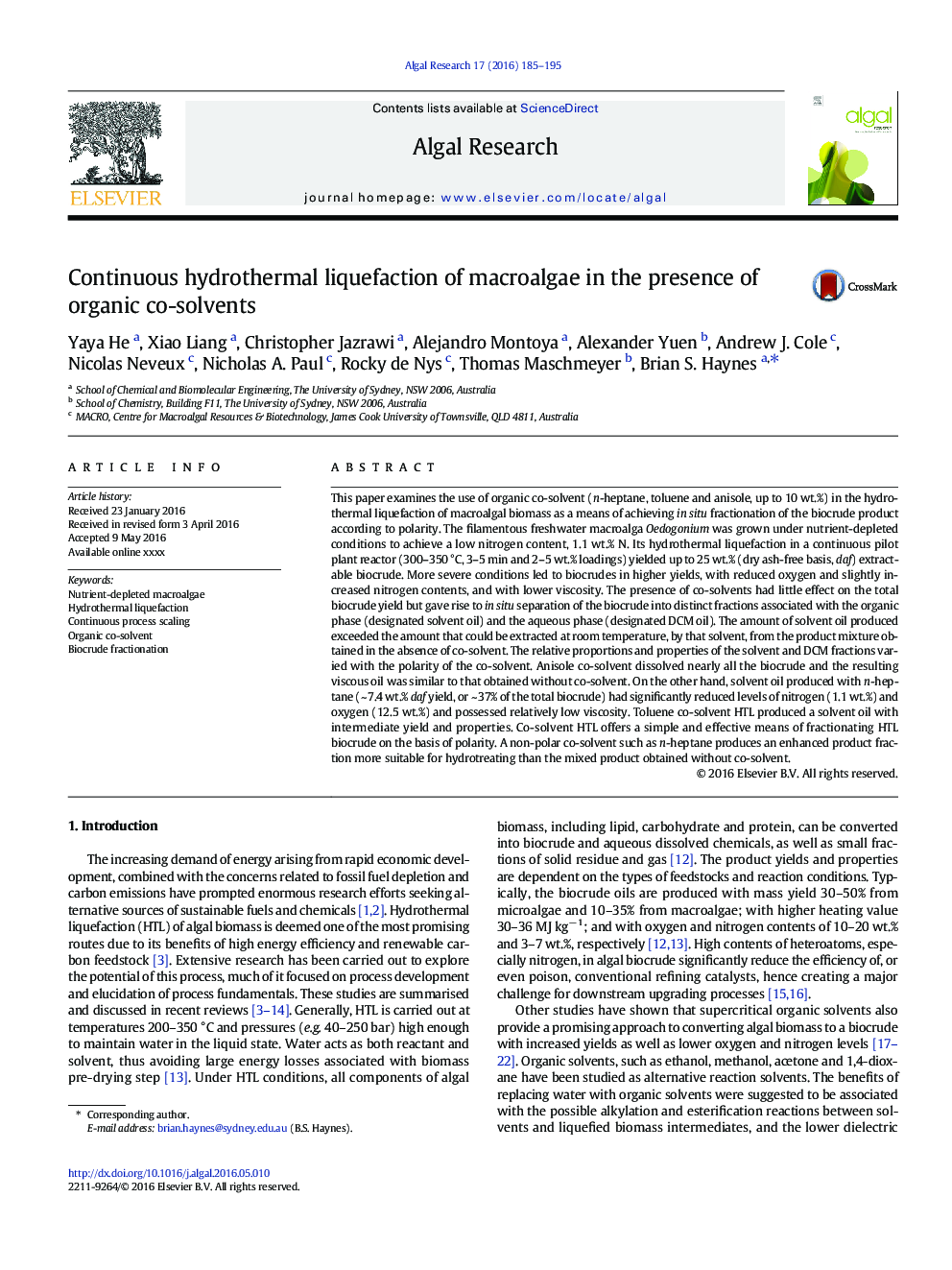| کد مقاله | کد نشریه | سال انتشار | مقاله انگلیسی | نسخه تمام متن |
|---|---|---|---|---|
| 8086951 | 1521815 | 2016 | 11 صفحه PDF | دانلود رایگان |
عنوان انگلیسی مقاله ISI
Continuous hydrothermal liquefaction of macroalgae in the presence of organic co-solvents
ترجمه فارسی عنوان
مایع سازی هیدروترمال مستمر از ماکالالایز در حضور حلال های آلی
دانلود مقاله + سفارش ترجمه
دانلود مقاله ISI انگلیسی
رایگان برای ایرانیان
موضوعات مرتبط
مهندسی و علوم پایه
مهندسی انرژی
انرژی های تجدید پذیر، توسعه پایدار و محیط زیست
چکیده انگلیسی
This paper examines the use of organic co-solvent (n-heptane, toluene and anisole, up to 10 wt.%) in the hydrothermal liquefaction of macroalgal biomass as a means of achieving in situ fractionation of the biocrude product according to polarity. The filamentous freshwater macroalga Oedogonium was grown under nutrient-depleted conditions to achieve a low nitrogen content, 1.1 wt.% N. Its hydrothermal liquefaction in a continuous pilot plant reactor (300-350 °C, 3-5 min and 2-5 wt.% loadings) yielded up to 25 wt.% (dry ash-free basis, daf) extractable biocrude. More severe conditions led to biocrudes in higher yields, with reduced oxygen and slightly increased nitrogen contents, and with lower viscosity. The presence of co-solvents had little effect on the total biocrude yield but gave rise to in situ separation of the biocrude into distinct fractions associated with the organic phase (designated solvent oil) and the aqueous phase (designated DCM oil). The amount of solvent oil produced exceeded the amount that could be extracted at room temperature, by that solvent, from the product mixture obtained in the absence of co-solvent. The relative proportions and properties of the solvent and DCM fractions varied with the polarity of the co-solvent. Anisole co-solvent dissolved nearly all the biocrude and the resulting viscous oil was similar to that obtained without co-solvent. On the other hand, solvent oil produced with n-heptane (~ 7.4 wt.% daf yield, or ~ 37% of the total biocrude) had significantly reduced levels of nitrogen (1.1 wt.%) and oxygen (12.5 wt.%) and possessed relatively low viscosity. Toluene co-solvent HTL produced a solvent oil with intermediate yield and properties. Co-solvent HTL offers a simple and effective means of fractionating HTL biocrude on the basis of polarity. A non-polar co-solvent such as n-heptane produces an enhanced product fraction more suitable for hydrotreating than the mixed product obtained without co-solvent.
ناشر
Database: Elsevier - ScienceDirect (ساینس دایرکت)
Journal: Algal Research - Volume 17, July 2016, Pages 185-195
Journal: Algal Research - Volume 17, July 2016, Pages 185-195
نویسندگان
Yaya He, Xiao Liang, Christopher Jazrawi, Alejandro Montoya, Alexander Yuen, Andrew J. Cole, Nicolas Neveux, Nicholas A. Paul, Rocky de Nys, Thomas Maschmeyer, Brian S. Haynes,
